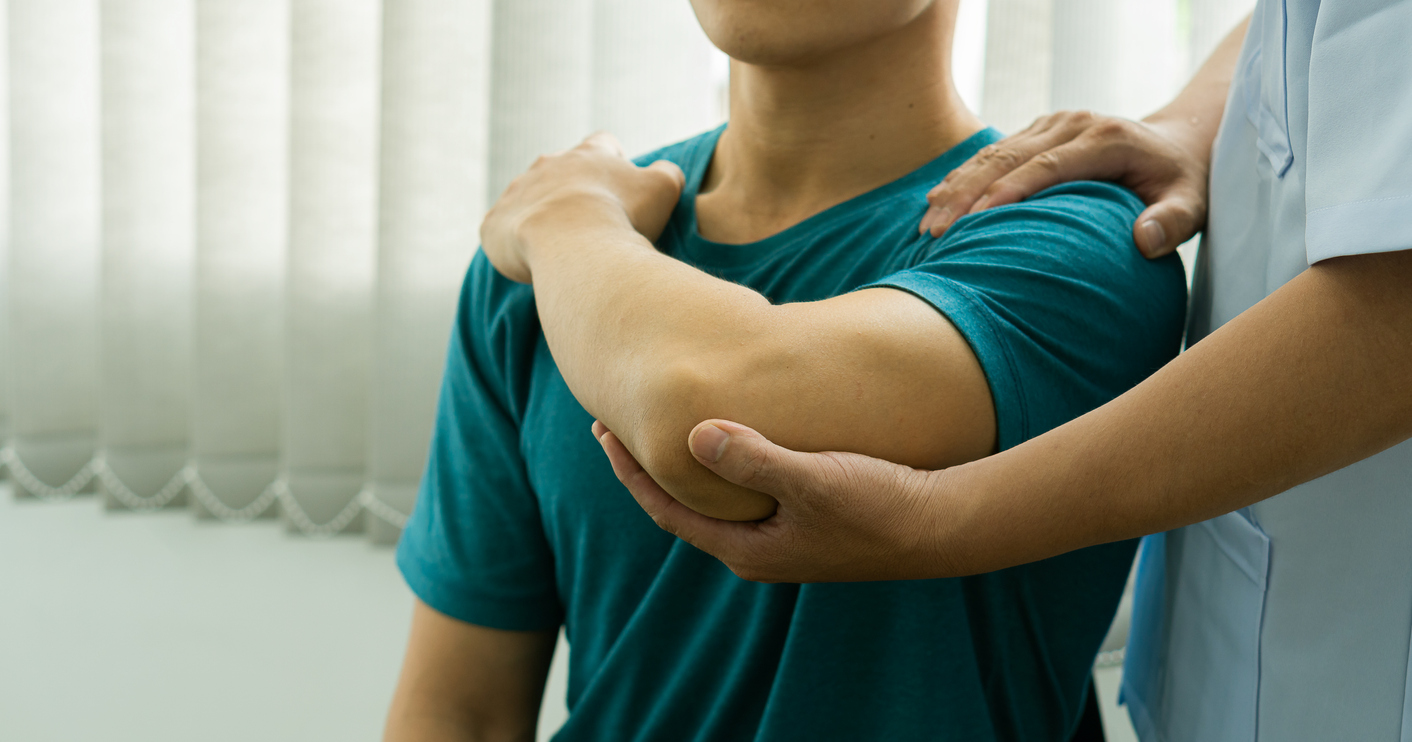
Too many Australians are forced out of work due to CRPS
People with Complex Regional Pain Syndrome (CRPS) need help across Australia. Medical and financial help are both important after being forced out of work due to complex regional arm or leg pain.
The chronic pain makes it hard to focus and do your job consistently.
Centrelink almost always rejects people with CRPS for disability support pensions which makes daily life a struggle.
Many Australians with chronic pain are eligible for insurance money from their super policies but most don’t know that it exists or how to claim it.
According to AIHW, 1 in 5 Australians over 45 experiences chronic pain. This is a major health issue in Australia.
Is CRPS a common disability in Australia?
Is CRPS a disability in Australia? Yes! CRPS is a disability that affects thousands of Australians and up to 1 in 20 adults. From National Prescribing Service (NPS) Medicine Wise, chronic / complex regional pain syndrome accounts for approximately 2–5% of adults and up to 20% of paediatric pain clinic patients.
What is Complex Regional Pain Syndrome?
Complex regional pain syndrome (CRPS) is a condition that causes pain, changes in skin colour and other symptoms in a certain part of your body — usually in your extremities (Read more at Cleveland Clinic). Your extremities include your arm, leg, hand or foot.
Experts believe that CRPS occurs as a result of dysfunction in your central or peripheral nervous systems. Your central nervous system consists of your brain and spinal cord. Your peripheral nervous system relays information from your brain and spinal cord to your organs, arms, legs, fingers and toes. The abnormal functioning results in an overreaction to pain signals that your nervous system can’t shut off.
There are two subtypes of Complex Regional Pain Syndrome:
- Type I: This type occurs without nerve damage. It happens after an illness or injury that didn’t directly damage a nerve. Type I was formerly known as reflex sympathetic dystrophy.
- Type II: This type occurs after known nerve damage. It was formerly known as causalgia.
CRPS can also either be acute (short-term) or chronic (lasting longer than six months). It’s usually treatable.
What symptoms do Australians with Complex Regional Pain Syndrome have?
MayoClinic lists multiple signs and symptoms including:
- Continuous burning or throbbing pain, usually in the arm, leg, hand or foot
- Sensitivity to touch or cold
- Swelling of the painful area
- Changes in skin temperature — alternating between sweaty and cold
- Changes in skin colour, ranging from white and blotchy to red or blue
- Changes in skin texture, which may become tender, thin or shiny in the affected area
- Changes in hair and nail growth
- Joint stiffness, swelling and damage
- Muscle spasms, tremors and weakness (atrophy)
- Decreased ability to move the affected body part
Symptoms may change over time and vary from person to person. Pain, swelling, redness, noticeable changes in temperature and hypersensitivity (particularly to cold and touch) usually occur first. Over time, the affected limb can become cold and pale. It may undergo skin and nail changes as well as muscle spasms and tightening. Once these changes occur, the condition is often irreversible. CRPS occasionally may spread from its source to elsewhere in the body, such as the opposite limb.
What causes Australians to develop CRPS?
From WebMD., CRPS most likely does not have a single cause; rather, it results from multiple causes that produce similar symptoms. In cases of injury-related CRPS, the syndrome may be caused by a triggering of the immune response, which may lead to the inflammatory symptoms of redness, warmth, and swelling in the affected area. For this reason, it is believed that CRPS may represent a disruption of the healing process.
It most often appears after an injury. But it also can be triggered by an infection, heart attack, stroke, cancer, neck problems, or pressure on a nerve.
Who is most likely to get CRPS?
The US National Institute of Neurological Disorders and Stroke records that most CRPS illnesses are caused by damage to or improper function of the small peripheral C-fiber nerve fibres that carry pain messages to the brain.
It is unclear why some people develop CRPS while others with similar trauma do not. In more than 90 per cent of cases, CRPS is triggered by nerve trauma or injury to the affected limb that damages the thinnest sensory and autonomic nerve fibres. The “small fibres” that lack insulating thick myelin sheaths (a protective coating, like insulation that surrounds a wire) transmit pain, itch, and temperature sensations and control the small blood vessels and health of almost all surrounding cells.
The most common actions or activities that lead to CRPS are:
- Fractures—This is the most common cause, particularly wrist fractures. Nerves can become injured from a displaced or splintered bone, or pressure from a tight cast.
- Surgery—A surgical incision, retractors, positioning, sutures, or post-operative scarring can cause nerve injury.
- Sprains/strains
- Lesser injuries such as burns or cuts
- Limb immobilization (often from casting)—In addition to rarely pressing on nerves and restricting blood flow to the hands and feet as above, casts force prolonged disuse of a limb and deprive it of sensory input
- Very rare penetrations, such as from a cut or needle stick, can accidentally pierce a superficial sensory nerve.
Less than 10 per cent of individuals with CRPS report no causal injury or trauma.
The cause is often an undiagnosed internal nerve injury, such as nerve rubbing or tethering against hard internal structures or scars. Tiny clots sometimes block blood flow to a nerve and injure it. Very rarely, a new tumour, infection (such as leprosy), or abnormal blood vessels irritate a nerve. New chronic pain without evident cause requires thorough evaluation to check for internal problems.
Other influences include:
- Poor circulation
- Poor nerve health
- Immune system involvement
- Genetics
- Environment
Which treatments for CRPS can improve quality of life?
From Cleveland Clinic, the goal of treatment is to decrease your pain and other symptoms, restore function to the affected limb and maintain the quality of your life.
It’s important to treat CRPS as early as possible. The pain usually worsens without treatment and movement becomes more and more difficult.
Treatment requires a combination of carefully managed approaches, including:
- Physical therapy and occupational therapy – can help improve blood flow to your affected limb as well as increase your flexibility, strength, muscle tone and function with certain exercises.
- Lifestyle changes – Removing certain barriers that can prevent your nerves from healing can help increase the chance of recovery and the speed of recovery, including: quitting smoking and managing existing health conditions.
- Psychosocial and behavioural therapy – Having CRPS is associated with worsening anxiety, depression and stress, which can increase pain. Psychotherapy can help.
- Medications – No medications are specifically approved for CRPS in the U.S. However, your healthcare provider may recommend certain medications to manage your symptoms
Alternative therapies for pain management:
- Biofeedback.
- Acupuncture.
- Hypnosis.
- Reiki.
- Chiropractic.
If your CRPS hasn’t responded well to the therapies mentioned above or you have severe pain or ongoing CRPS, pain specialists may recommend the following more invasive treatments:
- Trigger point/tender point injections
- Sympathetic nerve blocks
- Spinal cord stimulation
- Dorsal root ganglia stimulation
- Peripheral nerve stimulation
- IV ketamine infusion
- Intrathecal drug pumps
What financial help is available after chronic regional pain – CRPS force people out of work?
There are ways to get access to financial help that you should look into. Complex regional pain syndrome settlements, disability pensions and insurance payouts can help in Australia. TPD insurance may be available as part of your super policy but you have to claim it.
Learn about Complex Regional Pain Syndrome – CRPS in Australia

Financial Help for CRPS in Australia
Learn about the different types of CRPS financial help available in Australia

CRPS TPD Claims
Learn about CRPS TPD Claims in Australia

